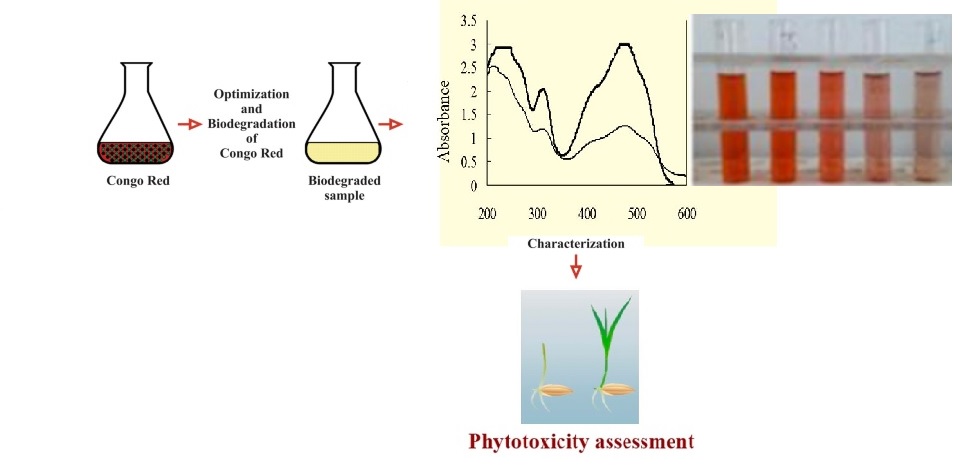
Azo dyes and the byproducts of their degradation have the potential to pollute the environment. Natural water bodies experience less sunlight penetration as a result of these effluents being released into rivers and lakes. Because of their hue, the dyes pollute flowers and the aesthetics because even a tiny amount is noticeable. The decolorization potential of an enzyme generated by a local white rot fungus is described in this research. Using an economical medium that includes agro-industrial residue in solid-state fermentation (SSF), the fungus Pleurotus sajor caju was able to optimize its production of ligninolytic enzymes. Comparing to the peels of mandarins, oranges, and cantaloupes, banana peels were the most effective substrate for the formation of extracellular manganese dependent peroxidase (MnP).
During the ten days, the highest activity of 6.3 U ml-1 was observed. After being immobilized, the enzyme was used to decolorize Congo Red (CR) dye. For maximum decolorization, the optimal pH, temperature, and enzyme concentration were determined to be 1.4 U ml-1, 4°C, and 35°C, respectively. Manganese-dependent peroxidase that had been partially purified shown remarkable decolorization activity to CR. The highest percentage of decolorization (95%) was noted. The UV-Vis spectrometer was used to track the biodegradation of CR. Following MnP treatment, CR's phytotoxicity (with regard to Sorghum vulgare and Phaseolus radiatus) was frequently decreased. As a result, this work may serve as a framework for the larger-scale manufacture and use of MnP on an inexpensive substrate.
To the best of our knowledge, this is the first report of MnP effectively detoxifying and decolorizing azo dye from immobilized P. sajor caju.
Total file downloads: 13